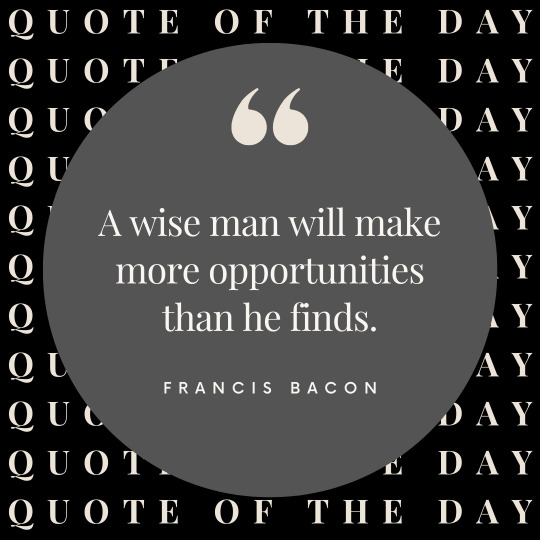#francisbacon
Photo

Francis Bacon
Francis Bacon (1561-1626) was an English philosopher, statesman, and author. Bacon is often considered one of the founders of modern scientific research and scientific method, even as "the father of modern science" since he proposed a new combined method of empirical experimentation and shared data collection so that humanity might finally discover all of nature's secrets and improve itself.
Continue reading...
126 notes
·
View notes
Text

ALIQUA NATURA SPECIALIS
by
Jaevonn Harris
#moma#guggenheimmuseum#newmuseum#jennysaville#portrait#amoakoboafo#georgecondo#karawalker#cindysherman#traceyemin#painting#davidshrigley#jonaswood#davidhockney#peterdoig#johncurrin#francisbacon#adrianghenie#hernanbas#elizabethpeyton#richardprince#lisayuskavage#brooklyn#rumba#gagosian#sanaacollection#genievefiggis#markgrotjahn#chrisofili#lucienfreud
13 notes
·
View notes
Text
Essay: Picture vs Painting

Johannes Vermeer. Girl Reading a Letter at an Open Window. c. 1657–1659.
For Francis Bacon, painting was “mysterious because the very substance of the paint, when used in this way (of idea and technique being inseparable), can make such a direct assault upon the nervous system; continuous because the medium is so fluid and subtle that every change that is made loses what is already there in the hope of making a fresh gain.”
Material is everything, the energy and emotions associated with the material all the more important. One of my teachers, Lorna Ferguson was so pleased with me getting paint on any and everything (much to my personal dislike at times as I valued some of the objects I had ruined to create something); for a while I could not understand the marvel, as I thought; ‘well, what other way is there to work with said substance.’ It never occurred to me, at least in the way of the artists mind, that painterly was being concerned with making the idea and technique of painting inseparable. I won’t speaking on being (an artist) - hard as it may be, but I’ve covered that in my previous article - but focus on the idea and the substance.
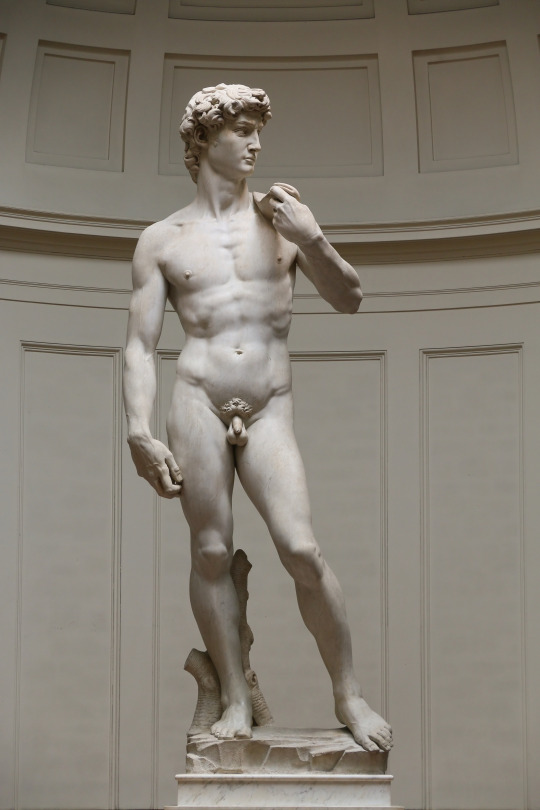
Michelangelo. David. c. 1501 – 1504.
Another one of my teachers, Ricky Burnett spoke of the ‘history of a painting’; which I interpreted as the realm of the invisible. I believe the object has to take up space in a way that it too exudes an energy, an idea that is made more complex when there are sentients in the space, it ultimately speaks to its power, of which is the result of its creator, involuntary or not. I have an issue when the objects is of nothingness, static and unimaginative. Minimalism is a great example of this, namely in the art of architecture, photography to painting itself. How can it be said that an object carries any sort of character if it is pristine, wherein it’s function has no interest in the material as forming part of its function and results in its being fixed and changeless. It is a result of such functionality, or rather, lack thereof that the object carries no sense of presence in that it becomes just another object in space disconnected from its surroundings, thus ultimately alienating itself from humanity.
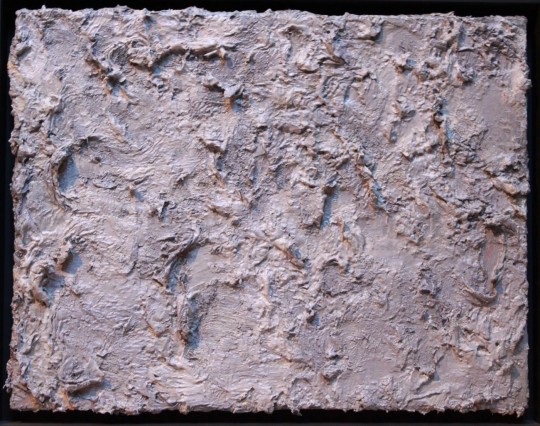
Ricky Burnett. Troubled with Goya 3.

Ricky Burnett. High Windows 2.
The makings and process of the objects should in themselves be studied, understood and appreciated in their materiality, most importantly in a way that they take into account the service to humanity and its relationship with time, history and ultimately the heritage of mankind’s culture. I believe that with this approach, humanity serves the object too resulting in a relationship that is ultimately symbiotic. The concept of symbiosis is one some artists and a larger group of designers have let go of, it makes the work easier, quicker and at no real cost to produce as it cares not of what it is in service of or to whom and as a result of its innate purpose.
The realm of invisible is learning to make these connections, meaningful ones with all that is around us and we’ll begin to feel, most importantly, interpret in the way of our individual being. Because you see I believe that the process is reflected in life of the painting/object - take for instance a Vermeer who layered multiple layers on thin glazes of paint each carrying their unique emotional state of the artists or Michelangelo labouring for just over 3 years on his David sculpture). The lack of such connected process results in an art that does not appear to show signs of time or even care for it; objects lose identity as they disconnect themselves from their creator and, most importantly, the generations they are a result of, leading to a worthlessness to the object. Such worthlessness is dangerous because objects lose any sense of importance, as having nothing to say to anyone or reflect on anything, a disconnect that dismisses their desire to be preserved; this is how a people are erased from history. Minimalism is now a job for artificial intelligence, the insentient.

King Koi Konboro. Great Mosque of Djenné. Thirteenth century

Donald Judd, 15 Untitled Works in Concrete, 1980-1984.

Sir Giles Gilbert Scott. K6 (Kiosk No. 6). 1935.

#painting#design#architecture#vermeer#michelangelo#david#sirgilesgilberscott#telephone#great mosque of djenne#rickyburnett#FrancisBacon
10 notes
·
View notes
Photo
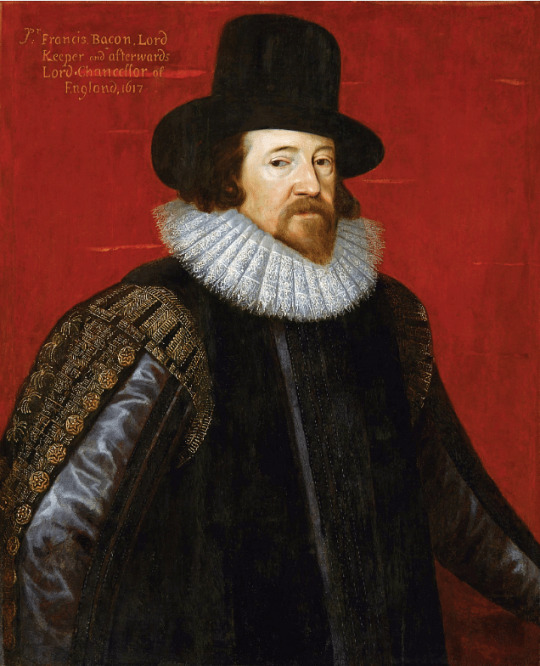
Francis Bacon
Francis Bacon (1561-1626) était un philosophe, homme d'État et auteur anglais. Bacon est souvent considéré comme l'un des fondateurs de la recherche scientifique moderne et de la méthode scientifique, voire comme le "père de la science moderne", car il proposa une nouvelle méthode combinée d'expérimentation empirique et de collecte de données partagées afin que l'humanité puisse enfin découvrir tous les secrets de la nature et s'améliorer.
Lire la suite...
2 notes
·
View notes
Photo

#u2 #adamclayton #francisbacon #outsider #espritu2 https://www.instagram.com/p/CmOtS_jIgXn/?igshid=NGJjMDIxMWI=
15 notes
·
View notes
Text
The father of the scientific method, Francis Bacon, was a card-carrying bi man!
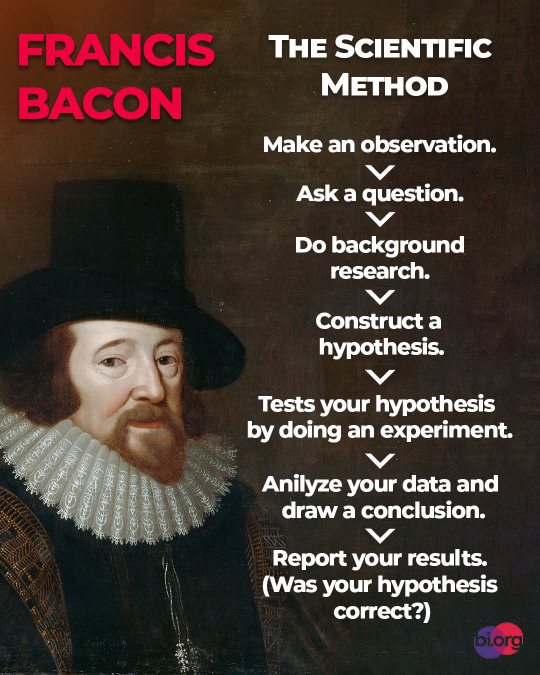
6 notes
·
View notes
Text
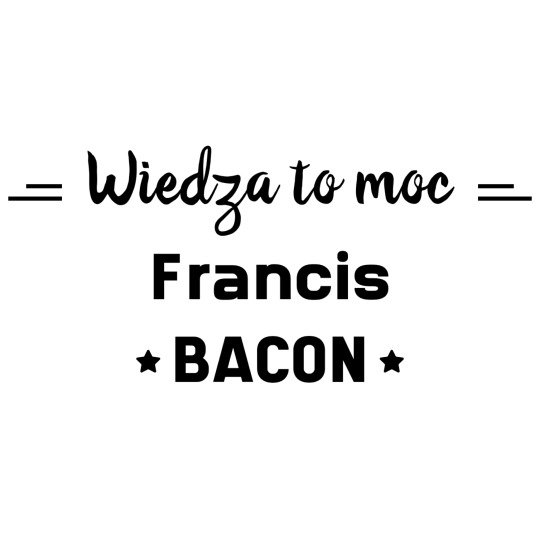
#cytat#wiedza#moc#wiedzatomoc#francisbacon#bacon#arkadiuszmiodek#arekmiodek#aremio#aremioart#amiod#arek#arkadiusz
2 notes
·
View notes
Photo
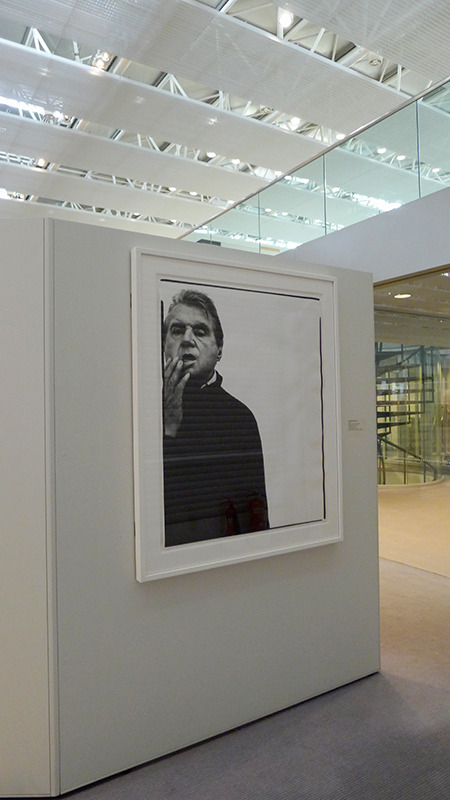
Francis Bacon in Paris, Sainsbury Centre, University of East Anglia, Norwich. Tuesday, 14 June 2022.
11 notes
·
View notes
Photo
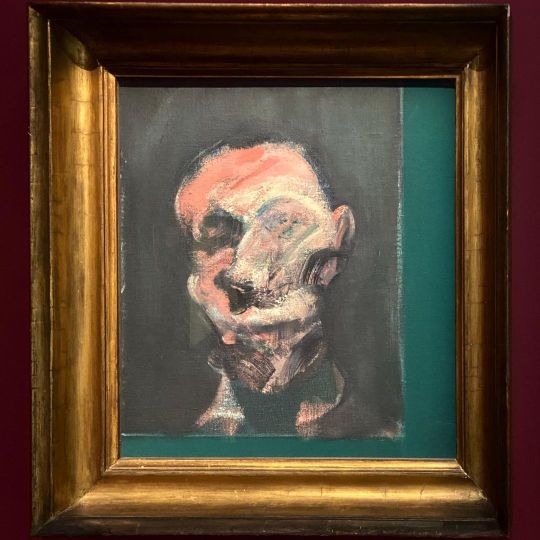
Some cracking Bacons, fulsome Auerbachs, freaky Freuds and unsettling Michael Andrewses in the current show at @gagosian on Grosvenor Hill in London. Plus photos of the lots of them by Bruce Bernard. #francisbacon #lucianfreud #frankauerbach #michaelandrews #gagosian #gagosiangallery #londongalleries #art #painting #exhibition #londonpainters (at Gagosian, Grosvenor Hill, London) https://www.instagram.com/p/Cl_VUUUow7D/?igshid=NGJjMDIxMWI=
#francisbacon#lucianfreud#frankauerbach#michaelandrews#gagosian#gagosiangallery#londongalleries#art#painting#exhibition#londonpainters
5 notes
·
View notes
Photo
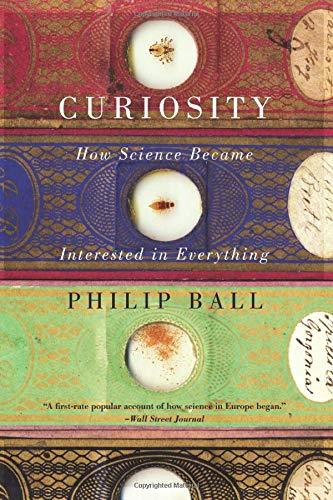
Curiosity: How Science Became Interested in Everything
Behind the Scientific Revolution was a revolution in mindset and perspective. During the Middle Ages, the search for new knowledge in Europe was constrained by a theocratic society. The Renaissance helped to remove some of those limits and gave some space for human curiosity to stretch its legs. In Curiosity: How Science Became Interested in Everything, Philip Ball discusses the ways curiosity helped scientists around the 17th century to further human knowledge and set a foundation, or paradigm, for modern science.
Ball shows that the word "curiosity" differed in meaning depending on the time period. During early medieval Europe, for example, having curiosity was deemed as a fault by religious doctrines. After the Renaissance, the connotation of curiosity ranged from an informal and disorganized fond of collecting untraditional information to an ordered and systematic learning of uncharted fields of knowledge. The Scientific Revolution, Ball argues, was the maturation from the former connotation of curiosity to the latter.
Continue reading...
82 notes
·
View notes
Photo


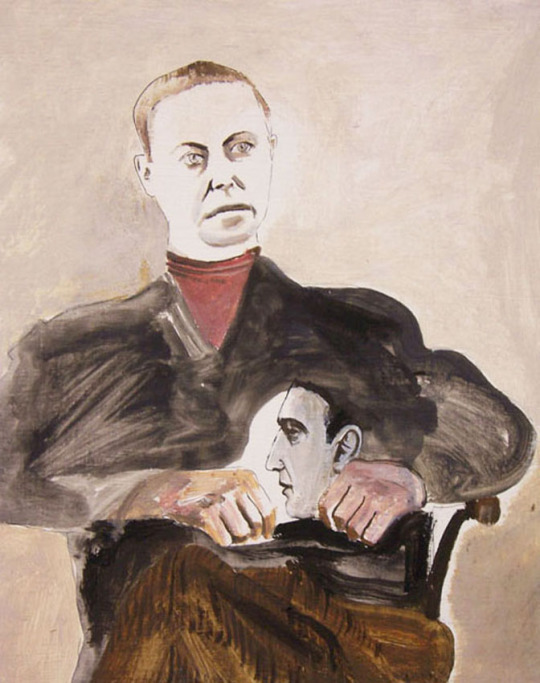
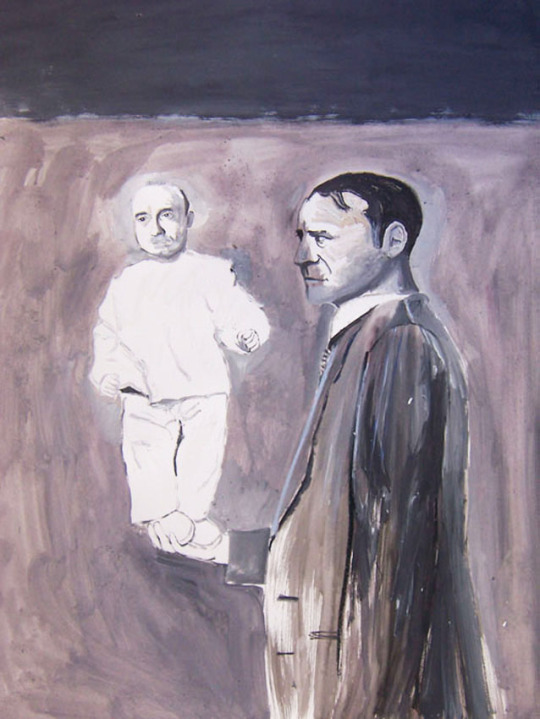


SERIE TASCHEN ,2006 . Painting on paper
#lecourbusier#eduoardmanet#francisbacon#mariosironi#xosevilamoure#arte#portraits#portrait#artists#artists on tumblr#contemporaryart#manet#mario sironi
2 notes
·
View notes
Text
Essay: Is depression a natural by-product of being an artist

Self-Portrait with Bandaged Ear, Vincent van Gogh. 1889
We’ve all heard about the “tortured artist,” thinking, oof, I don’t want to end up there. Yet, you soon realise what they’ve created could’ve been a result of being in such a state of awareness; relentless persistence of observation, expression and individual psych. It has to do with the art of being; never getting away from it or allowing for mundane not-really-important interruptions to win, all in the spirit of getting to new and worthwhile (remember this word) ideas - all the while in solitude - that’s one of the requirements (at least to my experience).Tortured carries a negative connotation, in the world of an artist however, I believe it has to do with never truly shutting off; having a constant existing not only of the world around you but inside of you.
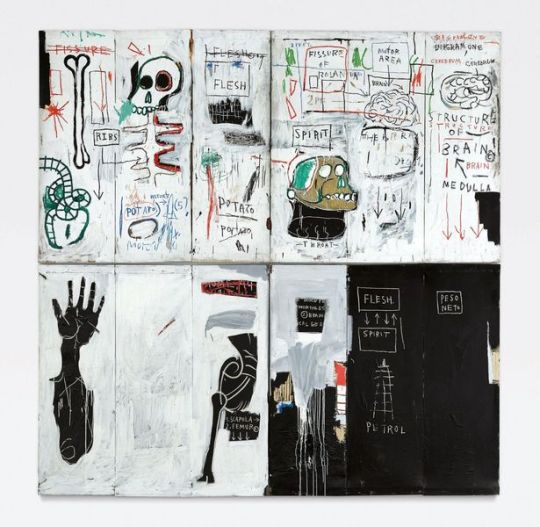
Flesh and Spirit, Jean-Michel Basquiat. c. 1982–83
Research suggests that bipolar disorder results in creativity. Often, not always. On the surface level, it explains everything as I can see the parallels by looking at a Basquiat, you think; such sudden bursts of creativity, the kind too that make for a great artist, how? I’m by no means suggesting he had a mental illness, I can’t speak on his state of mind, but what genius. I have but only admiral reverence. The trend does in fact persists in a way that one cannot refute the streams of genius seemly flowing from ill mental health issues.
Conversely, it is believed the practice of art helps with stress, decreased depression and anxiety but honestly, the practice never helped me with that because the cycle of bringing ideas to life goes a little like this. In the being, there’s no “chasing of the clock,” tasks performed ordinarily or by rote; there are however times for keeping your head down and grinding it out, honestly, there is no formula I can suggest that makes for a concise proof. It’s getting the ideas out through sheer force. You sometimes don’t even know if idea is worthwhile, even after you’ve made it all the way to the end of it, baiting, trying to catch it, trembling and your lips quivering..the performances of a matador (violent disorder) at times, and on other occasions, the patience of a fisherman, something not short of the labour of love. See because sometimes the end result is just that, the end. In the book I’m currently reading, ‘Modernists and Mavericks’ by Martin Gayford, there’s a quote by Bridget Riley which I believe is an important guide to what we (artists) should be doing to alleviate anxiety, at least to some extent and it goes like this, “People feel that it is very important for artists to have an aim. Actually, what’s vital is to have a beginning. You find your aim in the process of working, You discover it,” (Gayford, 2019, p43).
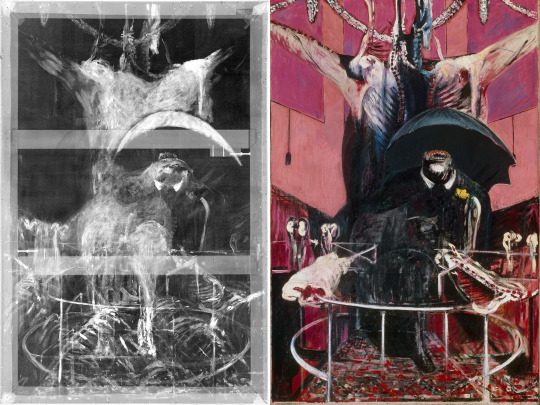
Painting 1946, Francis Bacon. 1946

I have ideas that I want to speak on through my work, tough ones; dreading to have the conversations with humanity myself. The art plays this role - never with vivid explanations - I value that, because the over-explanations take away from its mystique, bores the work; the work is however always honest, revealing and necessary (cannot do without it). The audience can be witness to every vehement moment I’ve encountered with the work, if only they were to look. Being a self-taught outsider, the self-doubt is incredibly paralysing; something I’m fighting constantly with marginal success I’ll say. I never like the idea of drawing or painting like other artists, it’s great as an exercise and all, but not when your emotional interests are concerned with their personal expression.
I guess I’ve realised that being in art is inevitable and worthwhile suffering, even necessary as it is an act that brings one closer to the act of God himself. “Pain and suffering are always inevitable for a large intelligence and a deep heart. The really great men must, I think, have great sadness on earth.” (F,Dostoevsky, Crime and Punishment).
Bibliography
Dostoyevsky, F. and Garnett, C. (2018) Crime and punishment. San Diego, California: Canterbury Classics.
Gayford, M. (2019) ‘Euston Road in Camberwell’, in Modernists and Mavericks: Bacon, freud, Hockney and the London painters. London, UK: Thames & Hudson, pp. 43–43.
Watson, S. (2023) Does bipolar disorder make you more creative? what research says, Healthline. Available at: https://www.healthline.com/health/bipolar-disorder/famous-creative-people (Accessed: 01 March 2023).
#francisbacon#art#sliwrites#design#painting#basquait#vangogh#portrait#crime and punishment#dostoevsky
10 notes
·
View notes
Text
The Black Triptychs
What death did not take
seeps incontinent, looks back,
then washes away.
3 notes
·
View notes
Photo
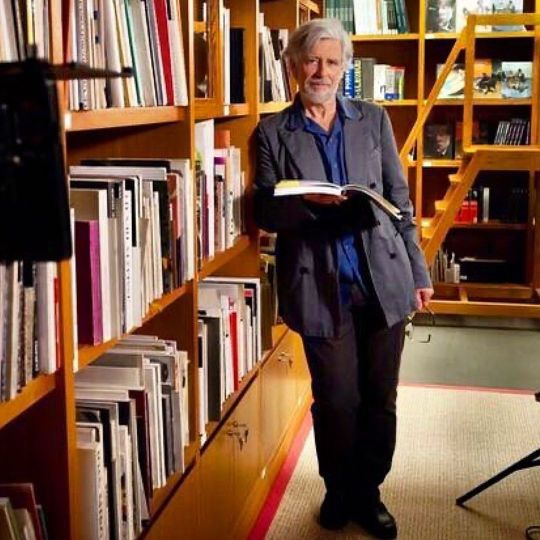
#Repost @adamskimono ・・・ On RTE One @rteone Thursday December 15, 10:15pm, Adam Clayton presents a show on painter Francis Bacon. As he retraces a trip Bacon took to Ireland in 1928, he explores the complicated relationship the artist had with the country he was born in. #AdamClayton #U2 #RTE #RTEone #Ireland #FrancisBacon https://www.instagram.com/p/Cl6nUjqosnq/?igshid=NGJjMDIxMWI=
7 notes
·
View notes
Photo
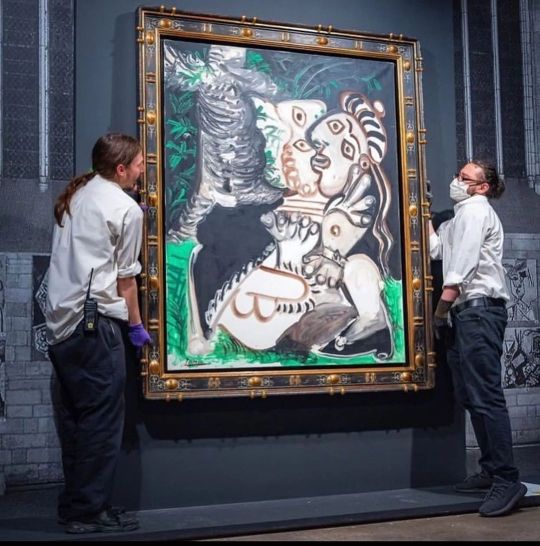
#Repost @hansfordandsons #pablopicasso #picassopainting #pablopicassoart #picassomuseum #picassoceramics #picassowomen @museupicasso #andywarhol #pablopicasso #davidhockney #keithharing #markrothko #tate #gugumhiem #willemdekooning #lynnchadwick #tracyemin #patrickheron #patrickcaufield #bridgetriley #francisbacon #vangogh #sandrablow #chagall #lucianfreud #globalartnetwork @hansfordandsons https://www.instagram.com/p/Cj_lKyOIoM9/?igshid=NGJjMDIxMWI=
#repost#pablopicasso#picassopainting#pablopicassoart#picassomuseum#picassoceramics#picassowomen#andywarhol#davidhockney#keithharing#markrothko#tate#gugumhiem#willemdekooning#lynnchadwick#tracyemin#patrickheron#patrickcaufield#bridgetriley#francisbacon#vangogh#sandrablow#chagall#lucianfreud#globalartnetwork
1 note
·
View note
